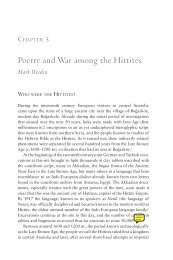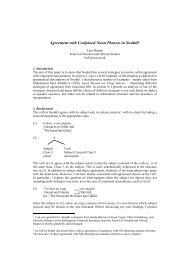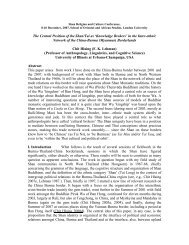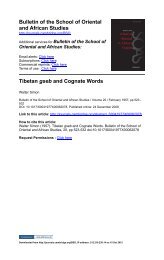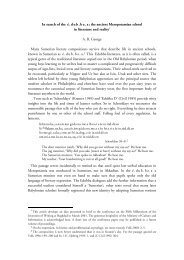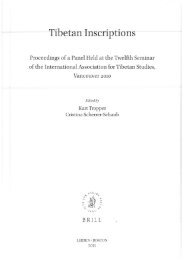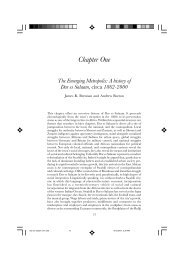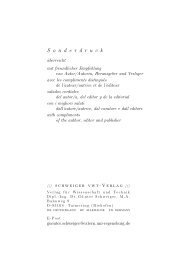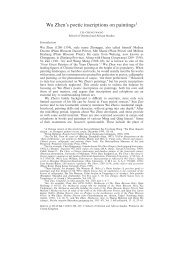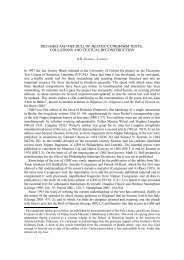000_JLC3_debut_FL - SOAS Research Online
000_JLC3_debut_FL - SOAS Research Online
000_JLC3_debut_FL - SOAS Research Online
Create successful ePaper yourself
Turn your PDF publications into a flip-book with our unique Google optimized e-Paper software.
28 G. Tucker Childs<br />
2.2.2. The distribution of tone<br />
One remarkable feature of North and South Atlantic is the uneven and patterned<br />
distribution of tonal languages. In Childs (1995b) I analyzed the prosodic systems of twentythree<br />
Atlantic languages, classifying each into the categories given in Table 3. With regard to<br />
categories 2 and 4, for a language to be considered “Tone with some accent”, tone must be at<br />
least lexical with some configurations or environments interpretable as accent. The mirror<br />
image (category 4) is much more straightforward; when a language has only “some tone”,<br />
tone is restricted to only a few lexical contrasts.<br />
Table 3: Accent and tone in Atlantic<br />
1. Unambiguously tonal 7<br />
2. Tone with some accent 3<br />
3. Both tone and accent 2<br />
4. Accent with some tone 3<br />
5. Unambiguously accentual 8<br />
The disappearance of tone in Atlantic has been regarded as unusual (Hombert 1984) and<br />
rightly so, but it is not an impossible occurrence, for it follows the more gradual changes from<br />
tone to accent in Bantu (Hyman 1978; Odden 1985, 1995). Generally, the languages which<br />
retained tone were those most in contact with Mande languages—virtually all of which are<br />
unambiguously tonal. Thus, contact with speakers of Mande languages may have been<br />
responsible for the retention of tone in Atlantic.<br />
2.2.3. Split predicates, the S-Aux-O-V-X syntagm<br />
Other consequences are syntactic. The split predicate or S-Aux-O-V-X syntagm has been<br />
attributed to contact, since Mande languages are overwhelmingly S-Aux-O-V, and there are<br />
contact-induced examples of S-Aux-O-V elsewhere (Güldemann 2008). Kisi is the best<br />
known example of this structure, for the rest of Atlantic generally allows only pronominal<br />
objects between the auxiliary and the (lexical) verb, parallel to what is seen in the highly<br />
synthetic Bantu verb. The examples in (3) show a single argument splitting the predicate. The<br />
examples in (4) show two arguments moved between AUX and the verb.<br />
(3) Kisi predicate split by a single argument<br />
S AUX O V<br />
a. fàlà có lɛ́ɛ́ŋndó yìkpàá<br />
Fallah PROG machete sharpen<br />
‘Fallah is sharpening the machete.’<br />
S AUX O V<br />
b. ŋ̀ cò bɛ̀llǒŋ cɔ̀ùwìá<br />
we PROG palm-nuts pick<br />
‘We are picking the palm nuts.’<br />
(4) Kisi predicate split by two arguments<br />
S AUX O O V<br />
b. à wá ndú kòówáŋ kìóó<br />
they PROG.PAST him medicine give<br />
‘They were giving him medicine.’<br />
Journal of language contact – THEMA 3 (2010)<br />
www. jlc-journal.org



